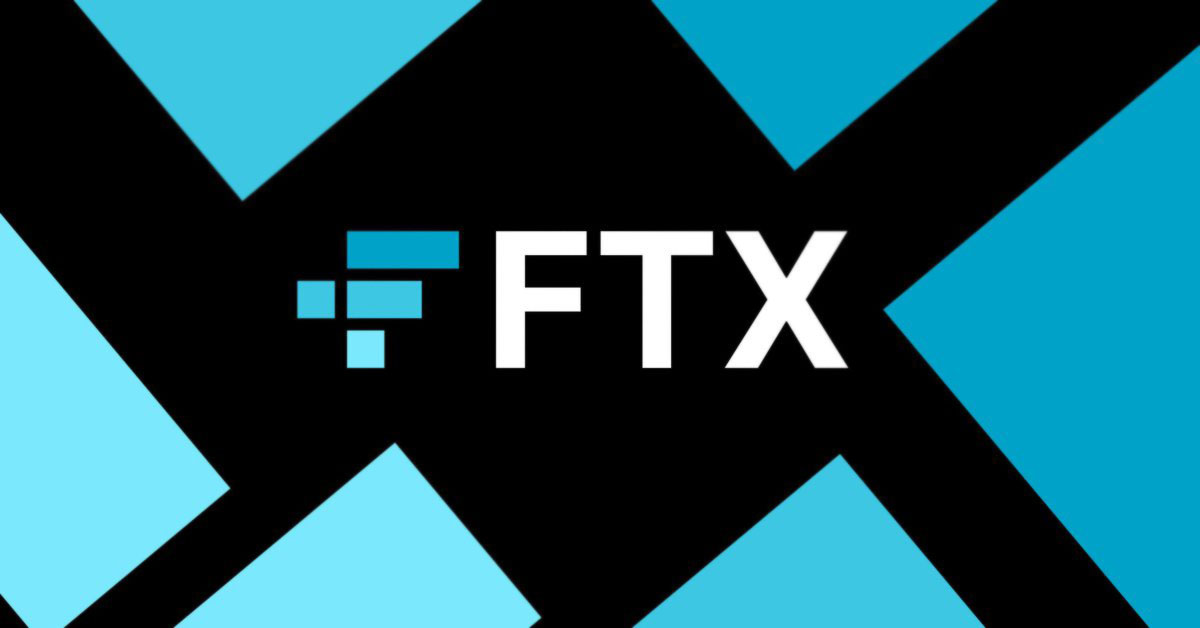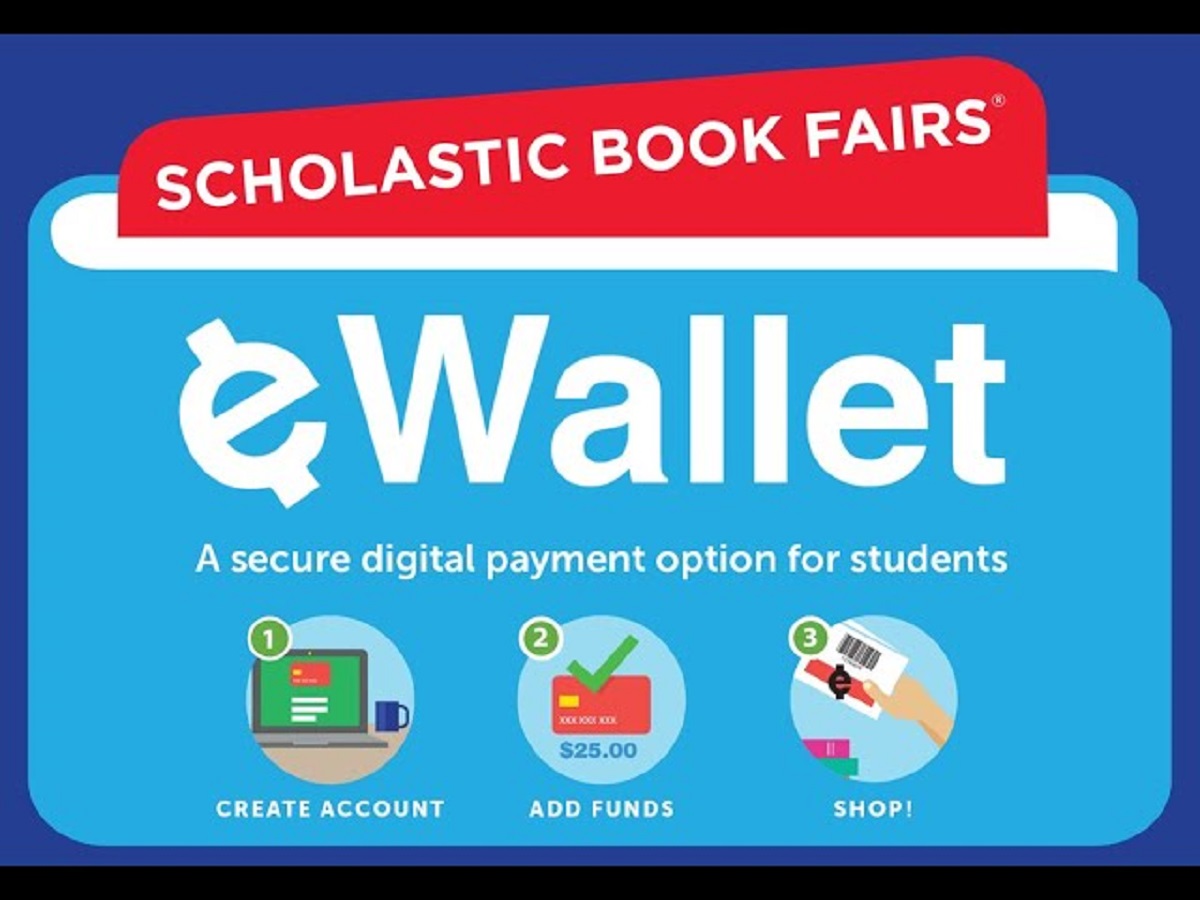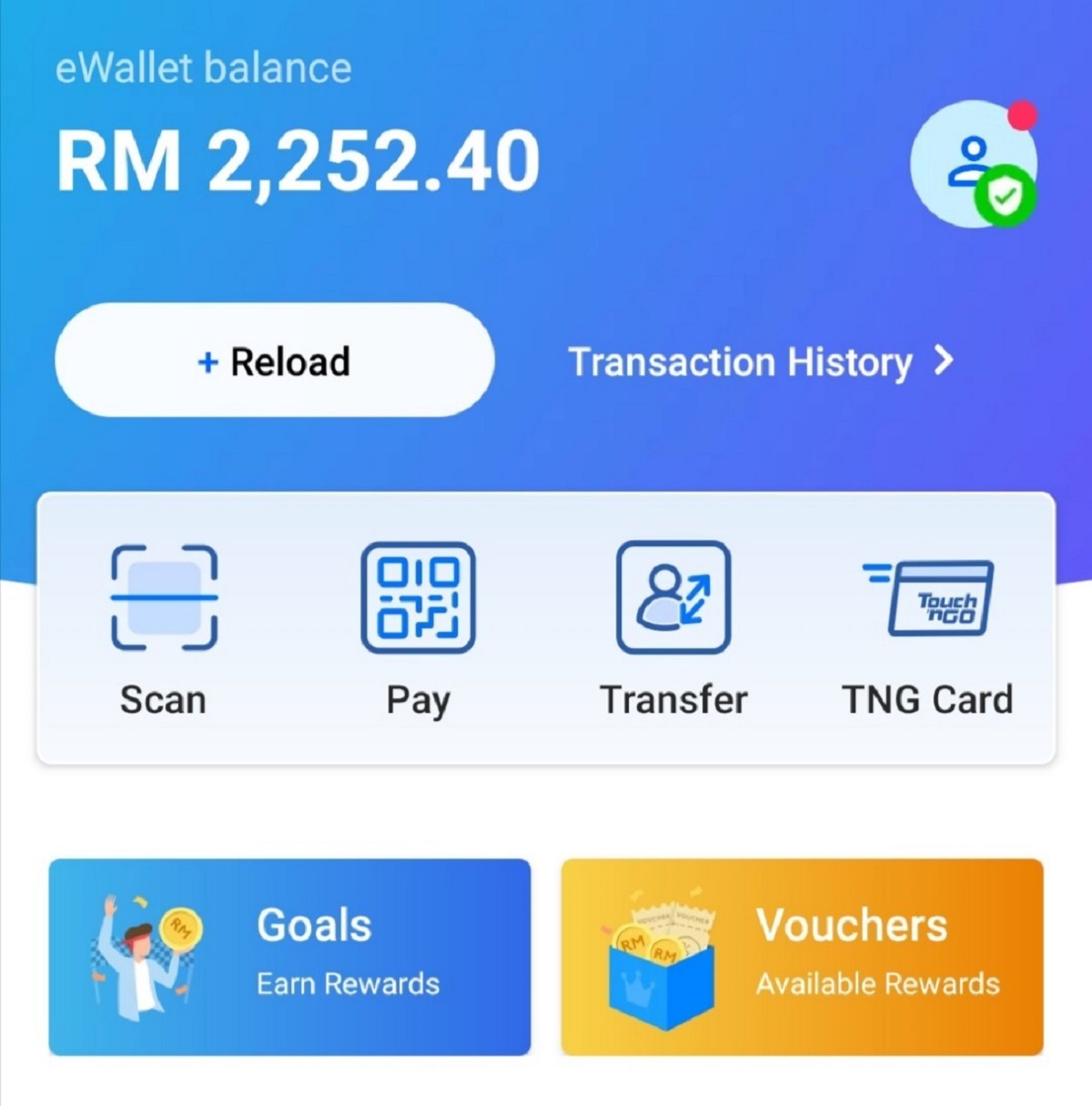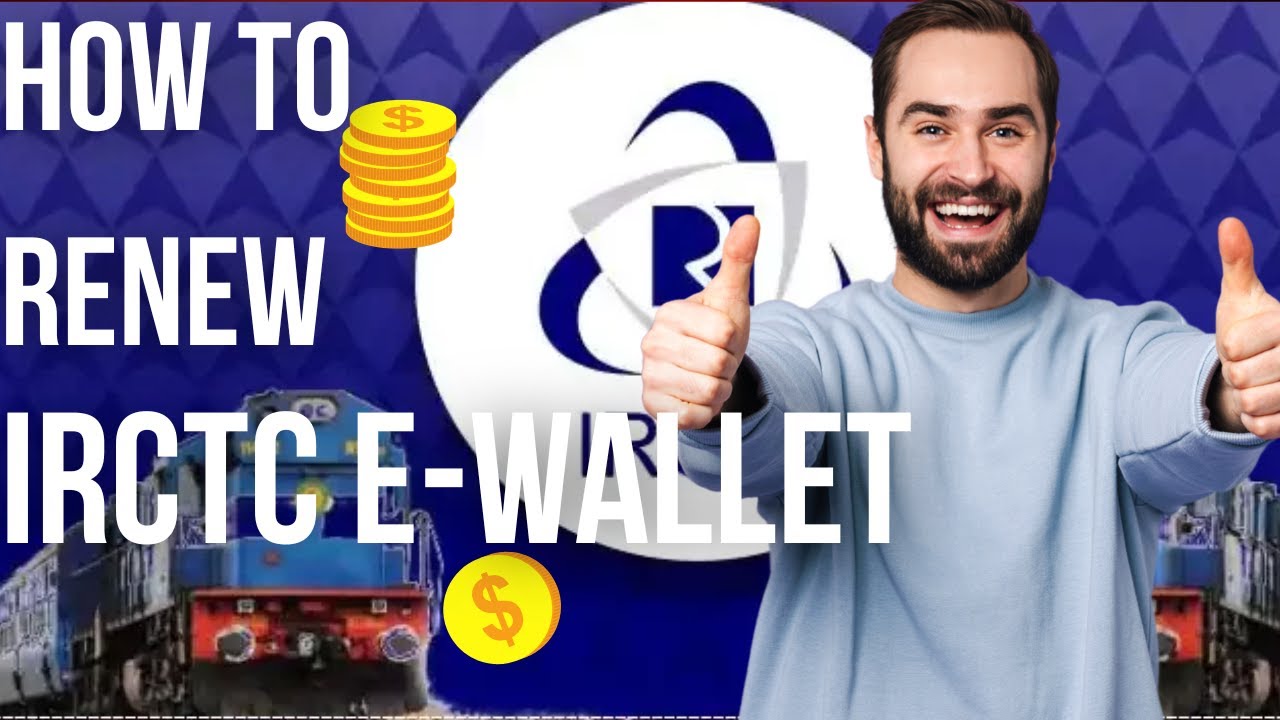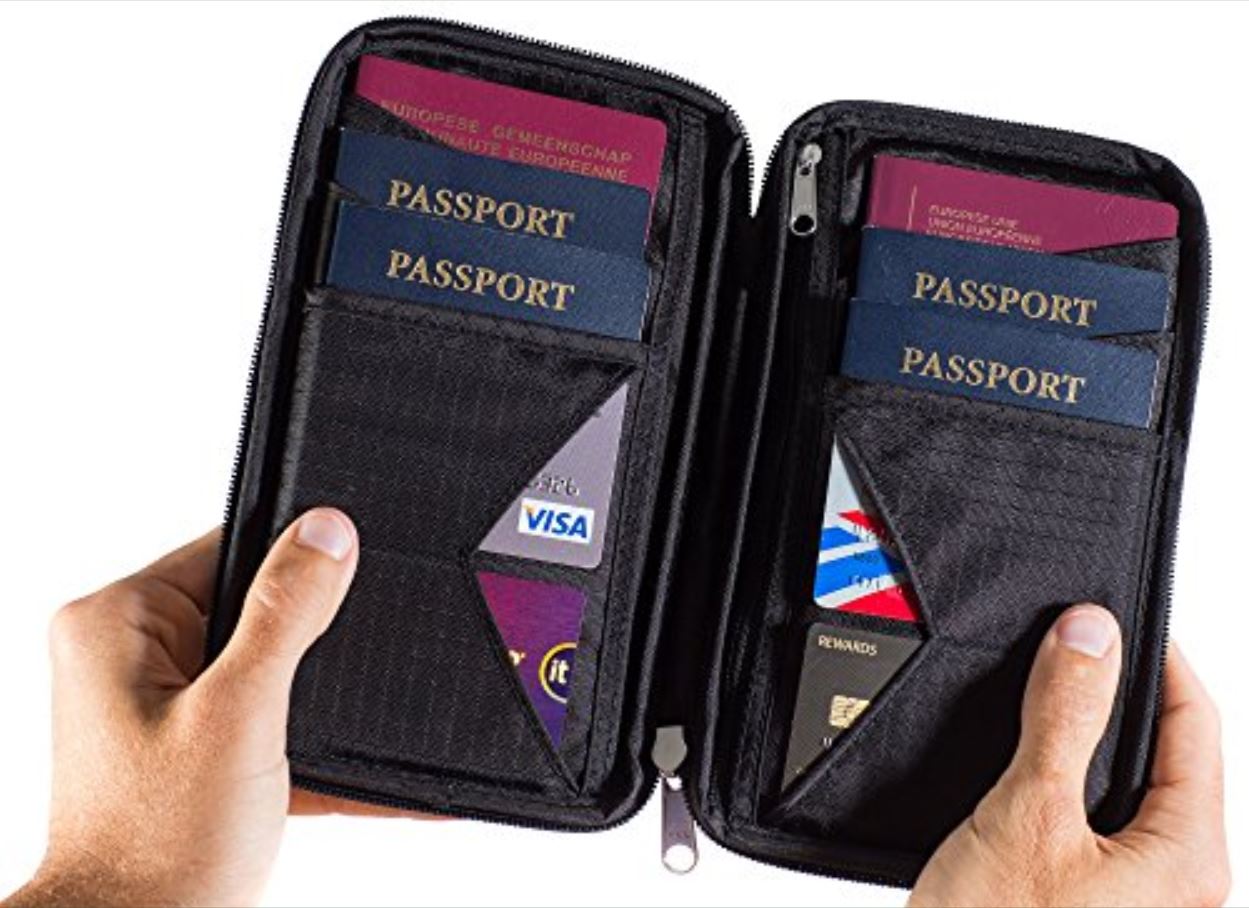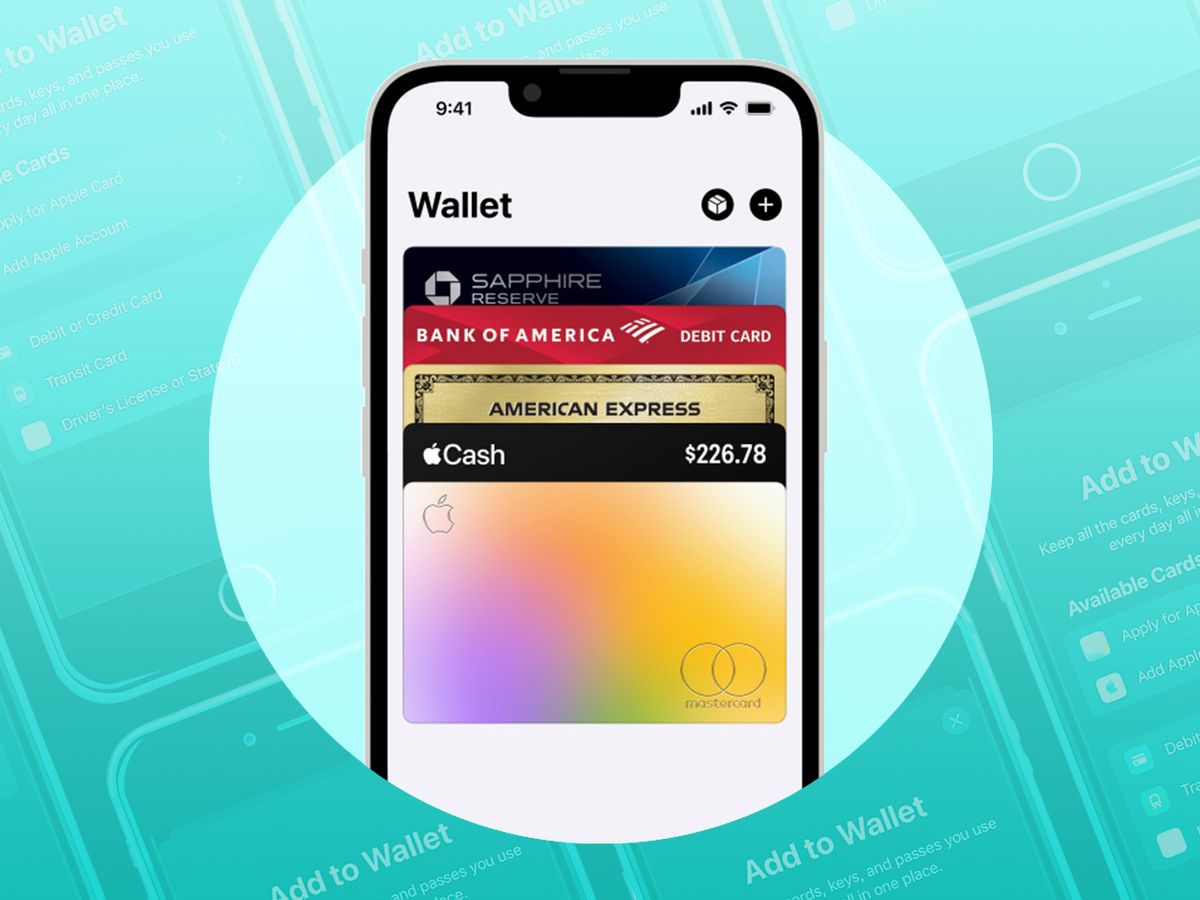Introduction
An electronic wallet, commonly known as an E-wallet, has become increasingly popular in our digitally-driven world. With the rise of online shopping and the need for secure and convenient payment methods, E-wallets offer a viable solution for individuals and businesses alike. But, how much does an E-wallet actually cost?
Before diving into the costs associated with E-wallets, let’s first understand what an E-wallet is and its functionality. An E-wallet is a digital payment system that allows users to store and manage their financial information, such as credit card details, bank account numbers, and even digital currencies, in a secure virtual wallet. It acts as a wallet in the digital realm, eliminating the need to carry physical cash or cards.
The functionality of an E-wallet goes beyond simple payment transactions. Users can make purchases online, pay bills, transfer funds to other users, and even withdraw cash from ATMs. The convenience and versatility of E-wallets make them an attractive option for individuals and businesses looking to streamline their financial transactions.
There are various types of E-wallets available in the market, including closed-loop and open-loop E-wallets. Closed-loop E-wallets are limited to specific merchants or brands, allowing users to make payments only within the specified ecosystem. On the other hand, open-loop E-wallets are connected to any bank or financial institution, offering more flexibility and acceptance at a wider range of merchants.
Popular E-wallet providers include PayPal, Apple Pay, Google Pay, Samsung Pay, and many more. These providers offer user-friendly interfaces, enhanced security features, and seamless integration with various online platforms and physical point-of-sale terminals.
Now, let’s delve into the factors that can influence the cost of an E-wallet. It’s important to note that the costs associated with an E-wallet can vary depending on various factors such as development expenses, maintenance and update costs, security measures, additional features and customization, transaction fees, and hidden costs.
Understanding these cost factors will help you make an informed decision and select the right E-wallet solution that aligns with your requirements and budget.
What is an E-wallet?
An E-wallet, also known as an electronic wallet or digital wallet, is a virtual storage system that enables individuals to securely store and manage their financial information. It serves as a digital counterpart to a physical wallet, allowing users to make electronic transactions without the need for physical cash or cards.
In simple terms, an E-wallet acts as a secure container for sensitive financial data, such as credit card details, bank account information, and even digital currencies like Bitcoin or Ethereum. The primary purpose of an E-wallet is to provide a convenient and secure method of payment for both online and offline transactions.
By using an E-wallet, users can make purchases online, pay bills, transfer funds to other users, top up mobile credit, and even withdraw cash from ATMs. The E-wallet software securely stores the user’s financial information and facilitates the transactions by securely transmitting the necessary data to the appropriate payment networks or merchant platforms. This eliminates the need for users to manually enter their payment information for each transaction and provides a streamlined and efficient payment experience.
E-wallets also offer various security features to protect the user’s financial data. These features may include two-factor authentication, encryption, tokenization, and biometric authentication methods like fingerprint or facial recognition. These measures ensure that user data remains secure and protected from unauthorized access.
Furthermore, E-wallets can be accessed through different devices, such as smartphones, tablets, or computers, providing users with flexibility and convenience in managing their finances. The mobile compatibility of E-wallets allows users to make payments on the go, even in physical stores by simply tapping their smartphones on payment terminals that support Near Field Communication (NFC) technology.
In summary, an E-wallet is a digital payment solution that enables users to store and manage their financial information securely. It offers a convenient and efficient way to make electronic transactions, eliminating the need for physical cash or cards. With advanced security features and mobile accessibility, E-wallets have revolutionized the way we handle our finances, making transactions more convenient and secure than ever before.
The Functionality of an E-wallet
An E-wallet provides a wide range of functionalities that go beyond simple payment transactions. Let’s explore some of the key features and benefits of using an E-wallet:
1. Payment Convenience: One of the primary functions of an E-wallet is to facilitate seamless and convenient payment transactions. Users can link their E-wallets to their debit or credit cards, bank accounts, or even digital currencies. This allows them to make quick and hassle-free payments with just a few clicks or taps, whether it’s for online purchases, bill payments, or person-to-person transfers.
2. Mobile Wallet Integration: E-wallets are commonly integrated with mobile devices, enabling users to make payments using their smartphones or tablets. With mobile wallet integration, users can simply wave or tap their smartphone near a compatible payment terminal to complete a transaction. This eliminates the need to carry physical cards, making transactions more convenient, secure, and contactless.
3. Loyalty Program Integration: Many E-wallets offer the functionality to integrate and manage loyalty programs. Users can store their loyalty cards and reward points within their E-wallets, eliminating the need to carry multiple physical cards. This simplifies the process of earning and redeeming rewards, making it easier for users to take advantage of loyalty benefits offered by their favorite merchants.
4. Peer-to-Peer (P2P) Transfers: E-wallets often enable users to transfer funds directly to other users, known as peer-to-peer transfers. Whether it’s splitting a dinner bill, sending money to a friend, or paying a provider for goods or services, P2P transfers offer a convenient and instant way to send and receive money without the need for traditional payment methods or physical cash.
5. Financial Management Capabilities: Many E-wallets provide tools and features to help users manage their finances more effectively. These may include budgeting tools, spending categorization, transaction history, and real-time notifications. Such features empower users to gain better control over their spending, track their expenses, and make informed financial decisions.
6. Security and Fraud Protection: E-wallets prioritize the security of users’ financial information. They employ advanced security measures, such as encryption, tokenization, and biometric authentication, to protect against unauthorized access and fraud. With these security features in place, users can trust that their payment details are kept secure and their transactions are protected.
7. Digital Currency Integration: Some E-wallets offer support for digital currencies like Bitcoin and Ethereum. This allows users to store, send, and receive cryptocurrencies within their E-wallet, expanding the possibilities for digital transactions and investments.
In summary, E-wallets offer a wide range of functionalities that go beyond traditional payment methods. With features such as payment convenience, mobile wallet integration, loyalty program integration, P2P transfers, financial management tools, security, and even digital currency support, E-wallets provide users with a comprehensive and versatile solution for managing their financial transactions.
Types of E-wallets
E-wallets come in various types, each catering to different needs and preferences. Let’s explore the different types of E-wallets available in the market:
1. Closed-Loop E-wallets: Closed-loop E-wallets are specific to a particular merchant or brand. They are designed to be used within a closed ecosystem, limiting the user’s payment capabilities to that specific merchant or group of merchants. Closed-loop E-wallets are commonly used in retail stores, amusement parks, restaurants, or any other business with a dedicated payment system.
2. Open-Loop E-wallets: Open-loop E-wallets are more versatile and widely accepted. These E-wallets are connected to a user’s bank account or credit card, and they can be used at any merchant that accepts electronic payments. Open-loop E-wallets provide users with the flexibility to make a wide range of transactions, both online and in physical stores.
3. Web-based E-wallets: Web-based E-wallets are accessible through a web browser on a computer or mobile device. Users can access their E-wallets by logging into the provider’s website, where they can manage their funds, make payments, and conduct other financial transactions. Web-based E-wallets are convenient for users who prefer accessing their E-wallets from different devices without the need to install additional applications.
4. Mobile E-wallets: Mobile E-wallets are designed specifically for smartphones and tablets, with dedicated applications that offer a user-friendly interface and seamless integration with mobile devices. These E-wallets take advantage of the device’s capabilities, such as near field communication (NFC), to enable contactless payments in physical stores with compatible payment terminals.
5. Software-based E-wallets: Software-based E-wallets are applications that users can download and install on their devices, whether it’s a computer, smartphone, or tablet. These E-wallets provide users with a secure and convenient way to store and manage their financial information locally on their devices. Software-based E-wallets often offer additional features, such as digital receipts or expense tracking, depending on the provider.
6. Hardware E-wallets: Hardware E-wallets, also known as digital wallets or crypto wallets, are physical devices that store cryptocurrency private keys offline. These devices provide enhanced security for users who want to store their digital assets securely. Hardware E-wallets are often in the form of USB-like devices and offer features like password protection, encryption, and backup options to safeguard the user’s digital currencies.
7. Virtual E-wallets: Virtual E-wallets are cloud-based, meaning the user’s financial information and transactions are stored and managed on remote servers. Virtual E-wallets are accessible from any internet-connected device, providing users with convenience and ease of use. The security of virtual E-wallets depends on the encryption and protection measures implemented by the provider.
Choosing the right type of E-wallet depends on factors such as the user’s preferred payment method, devices they frequently use, and the level of security and convenience they desire. It’s important for users to evaluate their needs and consider the features and limitations of each E-wallet type before making a decision.
Popular E-wallet Providers
The E-wallet market is flooded with a plethora of providers offering a wide range of features and benefits. Let’s explore some of the most popular E-wallet providers that have gained significant traction in the market:
1. PayPal: PayPal is an E-wallet pioneer and one of the most widely recognized and trusted names in the industry. It allows users to link their bank accounts, credit cards, or store money directly in their PayPal accounts. PayPal offers a user-friendly interface, seamless integration with online merchants, and a powerful set of features for both personal and business use.
2. Apple Pay: Apple Pay is a mobile E-wallet developed by Apple Inc. It is exclusively available on Apple devices, such as iPhones, iPads, and Apple Watches. Apple Pay leverages NFC technology to enable contactless payments at supported merchants. The convenience and security provided by Apple Pay have made it a popular choice among Apple users.
3. Google Pay: Google Pay, formerly known as Android Pay, is an E-wallet developed by Google. Similar to Apple Pay, Google Pay enables contactless payments using NFC technology on Android devices. It allows users to link their credit or debit cards, make in-app purchases, send money to friends, and even pay at physical stores.
4. Samsung Pay: Samsung Pay is another mobile E-wallet that supports contactless payments on Samsung devices. What sets Samsung Pay apart is its unique Magnetic Secure Transmission (MST) technology, which enables users to make payments even at traditional magnetic stripe payment terminals as well as NFC-enabled terminals. This wider compatibility has made Samsung Pay a popular choice for many Samsung users.
5. Venmo: Venmo is a peer-to-peer payment solution owned by PayPal. It focuses on simplifying money transfers between individuals, allowing users to easily split bills, pay friends, and request money. Venmo has gained popularity, particularly among younger users, due to its social sharing features and the ability to easily split expenses in a fun and interactive way.
6. Alipay: Alipay, developed by Alibaba Group, is a leading digital payment platform primarily used in China. It offers a wide range of features, including mobile payments, P2P transfers, bill payments, and even investment options. Alipay has played a pivotal role in the rapid growth of China’s cashless society, making it an essential E-wallet for merchants and users in China.
7. WeChat Pay: WeChat Pay is another prominent E-wallet in China and is integrated into the messaging and social media app, WeChat. WeChat Pay allows users to make mobile payments, send money to friends, split bills, and even make purchases on e-commerce platforms. With its immense user base and widespread popularity, WeChat Pay is a dominant force in the Chinese E-wallet market.
These are just a few examples of popular E-wallet providers, each with its unique features, target audience, and regional presence. When choosing an E-wallet provider, it’s crucial to consider factors such as the availability of the provider in your region, the acceptance of the E-wallet at your preferred merchants, and the compatibility with your devices and payment methods.
Factors Influencing the Cost of an E-wallet
When considering the cost of an E-wallet, it’s essential to understand the various factors that can influence the overall expenses. Here are some key factors that play a role in determining the cost of an E-wallet:
1. Development Costs: The development of an E-wallet involves designing and coding the necessary software and applications. The complexity and functionality required for the E-wallet can impact the development costs. Customizable features, integration with different platforms, and user interface design are all factors that contribute to the development costs.
2. Maintenance and Update Costs: E-wallets require ongoing maintenance and regular updates to ensure smooth functioning and optimal security. This includes bug fixes, security patches, user support, and compatibility with evolving technology. These maintenance and update costs need to be factored into the overall cost of the E-wallet.
3. Security Costs: Security is of paramount importance for E-wallets as they deal with sensitive financial data. Implementing robust security measures, such as encryption, multi-factor authentication, and fraud prevention systems, may come with additional costs. Investing in strong security measures is crucial to protect user data and maintain trust.
4. Additional Features and Customization Costs: E-wallet providers may offer additional features such as loyalty program integration, reward systems, and enhanced user experiences. These extra features contribute to the overall cost of the E-wallet. Additionally, if businesses require customization or branding to align the E-wallet with their brand, there may be additional costs associated with customization.
5. Transaction and Processing Fees: E-wallet providers often charge transaction fees for specific types of transactions, such as peer-to-peer transfers or withdrawals. Additionally, payment processing fees may apply when using the E-wallet for purchases or bill payments. These fees can vary based on the provider and the nature of the transaction.
6. Hidden Costs: It’s important to consider any hidden costs associated with the E-wallet. These may include fees for account setup, account maintenance, or inactivity fees. It’s essential to thoroughly review the terms and conditions of the provider to uncover any potential hidden costs that may impact the overall expenses.
7. Scale and Integration: The scale and level of integration required for the E-wallet can influence the cost. Larger enterprises or organizations with complex payment systems may require more extensive integration with their existing infrastructure, resulting in higher costs. On the other hand, small businesses or individuals may opt for simpler and more cost-effective E-wallet solutions.
Considering these factors will help individuals and businesses estimate and budget for the cost of implementing an E-wallet solution. It’s important to carefully assess the features, requirements, and long-term implications of the E-wallet to determine the overall value and return on investment.
Development Costs of an E-wallet
The development of an E-wallet involves several factors that can influence the overall cost of the project. Understanding these development costs is crucial for individuals or businesses considering the implementation of their own E-wallet solution. Here are some key factors that contribute to the development costs of an E-wallet:
1. Technical Requirements: The complexity and scope of the technical requirements heavily impact the development costs. Factors such as the desired features, functionality, and integration with other systems or platforms can increase the complexity of the development process and, subsequently, the associated costs. Customizable features, such as loyalty programs, digital receipts, or expense tracking, might require additional development effort and resources.
2. User Interface (UI) and User Experience (UX) Design: The UI and UX design of an E-wallet are crucial to its success and user adoption. Designing an intuitive and user-friendly interface requires careful planning, usability testing, and iterations. These design efforts are essential components of the development process, contributing to the overall costs of the E-wallet.
3. Platform Compatibility: The choice of platforms and operating systems on which the E-wallet will be accessible can affect the development costs. Developing an E-wallet for multiple platforms, such as iOS, Android, and web-based, requires additional effort, resources, and expertise. Each platform may have different requirements and compatibility considerations, adding complexity to the development process.
4. Security Measures: Security is paramount for E-wallet solutions. Implementing robust security measures to safeguard user data and transactions comes with additional costs. These measures may include encryption, biometric authentication, tokenization, and compliance with regulatory standards. The development team needs to ensure that the E-wallet is built with multiple layers of security to protect users’ sensitive financial information.
5. Testing and Quality Assurance: Thorough testing and quality assurance processes are essential to ensure the reliability, performance, and user satisfaction of the E-wallet. This includes rigorous testing of the software, identification and resolution of bugs or glitches, and simulation of real-world usage scenarios. Investing in comprehensive testing and QA is crucial to deliver a reliable and user-friendly E-wallet, but it can add to the development costs.
6. Integration and APIs: If the E-wallet needs to integrate with external systems or APIs, such as payment gateways or financial institutions, additional development effort and resources may be required. Ensuring smooth and secure integration with third-party services is essential for seamless transaction processing and data synchronization.
7. Development Expertise: The cost of hiring skilled developers or outsourcing the development of the E-wallet is a significant factor. Experienced developers with expertise in E-wallet development and security practices may come at a higher cost but can contribute to the successful implementation of the project. The size and capabilities of the development team, as well as the project timeline, can also impact the overall development costs.
Considering these factors will help individuals or businesses estimate the development costs associated with building an E-wallet. It’s crucial to carefully plan and budget for these costs to ensure a successful and cost-effective development process.
Maintenance and Update Costs
The development of an E-wallet is just the beginning of the journey. Once the E-wallet is launched, it requires ongoing maintenance and regular updates to ensure its smooth operation, optimal performance, and security. Understanding the maintenance and update costs is crucial for individuals or businesses considering the long-term management of their E-wallet solution. Here are some key aspects that contribute to the maintenance and update costs of an E-wallet:
1. Bug Fixes and Performance Optimization: Regular maintenance encompasses identifying and fixing any bugs or glitches that may arise in the E-wallet. These bugs can impact the functionality, user experience, and even the security of the application. Allocating resources to address bug reports, conduct testing, and implement bug fixes is essential to ensure a seamless and error-free user experience.
2. Security Patches and Upgrades: With the ever-evolving threats in the digital landscape, regular security updates and patches are critical to protect the E-wallet and its users. This includes implementing the latest security measures, addressing vulnerabilities, and staying up to date with industry best practices and regulatory requirements. These security updates and upgrades are essential to instill user confidence and maintain the integrity of the E-wallet.
3. User Support and Helpdesk: Providing timely and effective user support is an integral part of maintaining an E-wallet. Allocating resources to handle user inquiries, troubleshoot issues, and provide assistance contributes to the maintenance costs. This includes ensuring prompt response times, knowledgeable support staff, and efficient helpdesk systems to address user queries and concerns promptly.
4. Compatibility with Operating Systems and Devices: Operating systems and device platforms undergo regular updates and new releases. Ensuring the E-wallet remains compatible with these updates may require modifications and adaptations to the software. This includes testing the E-wallet on different operating system versions, devices, and screen sizes to provide a consistent and optimal user experience across various platforms.
5. Enhancements and Feature Updates: E-wallets need to remain relevant and competitive in the ever-changing digital landscape. Regular feature updates and enhancements are essential to meet evolving user needs, industry trends, and technological advancements. This may include incorporating new payment technologies, adding new functionality, or improving existing features based on user feedback and market demands.
6. Server and Infrastructure Costs: E-wallet maintenance requires dedicated servers or cloud infrastructure to ensure the availability and performance of the application. These server and infrastructure costs need to be factored into the ongoing maintenance expenses. Regular monitoring, performance tuning, and scaling of the server infrastructure may also be necessary to handle increasing user demand and maintain optimal performance.
7. Regulatory Compliance: Regulatory requirements around data privacy, financial transactions, and anti-fraud measures are subject to change. Ensuring ongoing compliance with applicable regulations may require updates to the E-wallet’s processes and security measures. Staying up to date with evolving regulations and making the necessary adjustments incur maintenance costs.
Considering these aspects is essential to estimate the maintenance and update costs associated with managing an E-wallet. Allocating resources and budget for regular maintenance, security updates, user support, feature enhancements, and infrastructure requirements will help ensure the longevity and success of the E-wallet.
Security Costs of an E-wallet
Security is of paramount importance when it comes to E-wallets, as they handle sensitive financial information and facilitate monetary transactions. Implementing robust security measures to protect the E-wallet and its users requires careful planning and investment. Understanding the security costs associated with an E-wallet is crucial for individuals or businesses looking to ensure the safety and integrity of their digital payment solution. Here are some key aspects that contribute to the security costs of an E-wallet:
1. Encryption: Encryption is a fundamental security measure in protecting user data. It involves encoding sensitive information, such as payment card details or personal identification, to make it unreadable to unauthorized individuals. Implementing strong encryption protocols and technologies adds an additional layer of protection to the E-wallet, but it comes with costs associated with encryption algorithms, key management, and ongoing maintenance of encryption processes.
2. Secure Authentication: User authentication is a critical component of E-wallet security. Implementing multi-factor authentication (MFA), such as biometric authentication (fingerprint or facial recognition) or two-factor authentication (2FA), enhances the security of user accounts. Implementing and maintaining these authentication methods may require additional development efforts, integration with third-party authentication services, and ongoing support.
3. Fraud Detection and Prevention: E-wallets need to incorporate robust fraud detection and prevention mechanisms. This includes monitoring and analyzing user transactions for suspicious activity, implementing real-time fraud alerts, and deploying machine learning algorithms to detect patterns of fraudulent behavior. Building and maintaining a reliable fraud detection system incurs costs associated with data analytics, algorithm development, and continuous updates to adapt to emerging fraud patterns.
4. Compliance with Security Standards: E-wallet providers must adhere to industry security standards and compliance regulations to safeguard user data and transactions. Compliance with standards such as Payment Card Industry Data Security Standard (PCI DSS) or General Data Protection Regulation (GDPR) requires ongoing efforts and investments. This may involve conducting regular security audits, vulnerability assessments, and implementing necessary controls and measures to ensure compliance.
5. Secure Server and Hosting: The E-wallet’s server infrastructure needs to be securely hosted to protect user data and ensure continuous availability. Investing in secure hosting services or maintaining dedicated servers with robust physical and network security is essential. These costs can include server maintenance, firewall protection, intrusion detection systems, and continuous monitoring to prevent data breaches or unauthorized access.
6. Regular Security Audits and Penetration Testing: Conducting regular security audits and penetration testing involves evaluating the E-wallet’s security measures and identifying vulnerabilities. This helps in discovering any potential weaknesses or loopholes that could be exploited by attackers. Engaging external security professionals to perform audits and penetration testing may incur costs, but they are essential in identifying and addressing any security gaps.
7. Employee Training and Awareness: Properly trained and security-aware employees are crucial for the overall security of the E-wallet. Investing in security training and awareness programs for employees ensures they understand best practices, security protocols, and the importance of maintaining data confidentiality. These training initiatives contribute to a culture of security and reduce the risk of internal security breaches.
Implementing a robust security framework is essential for an E-wallet to earn user trust and minimize the risk of security breaches. Allocating resources and budget for encryption, secure authentication, fraud prevention measures, compliance, secure hosting, security audits, and employee training are necessary to build and maintain a secure E-wallet solution.
Additional Features and Customization Costs
E-wallet providers often offer a range of additional features and customization options to meet the unique needs and preferences of their users. These features and customization options may come with associated costs. Understanding the benefits and considering the costs of these additional features and customization is crucial when implementing an E-wallet solution. Here are some key aspects to consider:
1. Loyalty Program Integration: E-wallets can be integrated with loyalty programs, allowing users to earn and redeem rewards seamlessly. This integration may involve collaboration with external loyalty program providers and developing the necessary interfaces. The costs associated with loyalty program integration depend on the complexity of the integration and the scale of the loyalty program.
2. Customizable User Interface (UI) and User Experience (UX): Customizing the UI and UX of an E-wallet to align with a brand’s identity or provide a unique user experience can add additional costs. This may involve designing customized graphics, layout adjustments, or developing specific features tailored to the brand’s requirements. The level of customization desired determines the complexity and associated costs.
3. Multi-language Support: If the E-wallet needs to support multiple languages to cater to a diverse user base, language translation costs should be considered. Translating the user interface, help documentation, and support materials into different languages incurs additional expenses. The number of languages and ongoing maintenance contribute to the overall costs.
4. Digital Receipts and Expense Tracking: Enhancing the functionality of the E-wallet with features like digital receipts or expense tracking adds value for users. Implementing these features involves data capturing, storage, and presentation capabilities. The complexity of the data tracking and reporting, as well as any integration with external systems, can influence the costs of implementing these additional features.
5. Payment Reminders and Notifications: Integrating payment reminders and notifications into the E-wallet can help users stay on top of their financial obligations. This may involve developing automated reminders, push notifications, or email notifications. The complexity and frequency of such notifications should be considered in terms of development and ongoing maintenance costs.
6. Custom Reports and Analytics: Businesses may require customized reports and analytics based on specific metrics or key performance indicators (KPIs). Developing custom reporting capabilities or integrating with business intelligence tools incurs additional costs. The complexity of the reports, data transformations, visualizations, and ongoing updates contribute to the customization costs.
7. White-labeling and Branding: E-wallet providers sometimes offer white-labeling options, allowing businesses to brand the E-wallet with their own logos and colors. This customization option may come with additional costs, which can vary based on the level of customization desired and the amount of effort required to implement the branding changes.
When considering additional features and customization, it is important to balance the benefits and costs. Prioritizing the features that align with the target audience’s needs, business objectives, and budget is crucial. Careful consideration of the customization requirements, ongoing maintenance, and associated costs will help ensure that the additional features contribute value to the E-wallet solution.
Transaction and Processing Fees
Transaction and processing fees are an important aspect to consider when implementing an E-wallet solution. E-wallet providers may charge fees for various types of transactions and payment processing services. Understanding these fees is essential for individuals or businesses evaluating the cost implications of using an E-wallet. Here are some key points to consider:
1. Peer-to-Peer (P2P) Transfer Fees: E-wallet providers may charge fees for P2P transfers, which involve sending money from one E-wallet user to another. These fees can be a fixed amount or a percentage of the transaction value. It’s important to consider the impact of P2P transfer fees, especially if there is a high frequency or a significant volume of such transactions.
2. Merchant Transaction Fees: When using an E-wallet for purchases at online or physical stores, merchants may incur transaction fees. These fees are usually a percentage of the transaction amount and are paid by the merchant to the E-wallet provider for facilitating the payment. Merchants need to consider these transaction fees when deciding whether to accept E-wallet payments or opting for alternative payment methods.
3. Currency Conversion Fees: If an E-wallet enables transactions in multiple currencies, currency conversion fees may apply. These fees cover the costs associated with converting funds from one currency to another at prevailing exchange rates. Currency conversion fees can vary depending on the provider and the specific conversion rates applied.
4. Withdrawal Fees: Some E-wallet providers charge fees when withdrawing funds from the E-wallet to a linked bank account, or when using an ATM to withdraw cash using the E-wallet. These fees can be a fixed amount or a percentage of the withdrawal amount. Users should carefully consider the applicable withdrawal fees, especially if regular or large withdrawals are expected.
5. Subscription or Membership Fees: Certain E-wallet providers offer premium features or enhanced services through subscription or membership plans. These plans may involve a recurring fee paid by the user to access exclusive benefits, higher transaction limits, or priority customer support. Businesses or users interested in these premium features should evaluate the costs and benefits to determine whether the subscription fees justify the added value.
6. Integration and Payment Gateway Fees: E-wallet providers may charge integration or payment gateway fees to businesses that wish to integrate the E-wallet into their existing systems. These fees cover the costs associated with technical integration and ensuring compatibility with the business’s infrastructure. The fees can vary depending on the complexity of the integration and the extent of support provided by the E-wallet provider.
7. Inactivity or Dormancy Fees: Some E-wallet providers may have policies in place that charge fees for inactivity or dormancy. These fees are imposed if the E-wallet remains inactive for a specific period. Users should be aware of any potential inactivity fees and the conditions under which they may apply to avoid any unexpected charges.
It is crucial for individuals or businesses to understand the transaction and processing fees associated with an E-wallet to evaluate the overall cost implications. Considering factors such as the nature of transactions, frequency, withdrawal requirements, and potential subscription fees will help make informed decisions and select an E-wallet that aligns with budgetary requirements and transaction preferences.
Hidden Costs to Consider
When considering the implementation of an E-wallet solution, it’s important to be aware of potential hidden costs that may not be immediately apparent. These hidden costs can significantly impact the overall expenses and should be taken into account during the decision-making process. Here are some hidden costs to consider when adopting an E-wallet:
1. Account Setup and Maintenance Fees: E-wallet providers may charge fees for initial account setup or ongoing maintenance. These fees can vary based on the provider and the type of account, such as personal or business. It’s essential to review the terms and conditions to understand any potential upfront or recurring fees associated with managing the E-wallet account.
2. Service Charges for Specific Transactions: Some E-wallet providers may impose service charges for specific types of transactions, such as international transfers or certain merchant categories. These charges can be in addition to any transaction fees and may vary based on the provider’s pricing structure. It’s important to familiarize oneself with the specific transaction types that may incur additional service charges.
3. Currency Conversion Rates: E-wallet providers typically offer currency conversion services for transactions involving different currencies. However, the conversion rates applied may not be as favorable as those offered by traditional financial institutions or currency exchange platforms. Users should consider the potential impact of less favorable conversion rates on the overall cost of using the E-wallet for international transactions.
4. Data Usage Costs: The use of an E-wallet may consume mobile data or incur additional internet usage charges, particularly when making transactions or accessing account information through a mobile app. The amount of data used will depend on the frequency and volume of the transactions, as well as the content of any associated notifications or updates. It’s advisable to review the data usage requirements of the E-wallet to estimate potential data-related costs.
5. Expedited or Premium Support Fees: E-wallet providers may offer enhanced support options for users who require expedited assistance or prefer priority customer support. These premium support services may involve additional fees beyond standard customer support channels. Users should consider whether such premium support options are necessary or if standard support channels adequately meet their requirements.
6. Redemption or Withdrawal Conditions: E-wallet providers may have specific conditions or fees associated with redeeming rewards, transferring funds to a bank account, or withdrawing cash. These conditions could include minimum withdrawal amounts, withdrawal frequency limits, or fees for certain types of redemptions. Familiarizing oneself with the provider’s policies regarding redemption or withdrawal can help avoid unexpected costs or limitations.
7. Regulatory Compliance Costs: Regulatory requirements for E-wallets can evolve over time, necessitating updates to ensure compliance. Compliance costs can include legal consultations, implementing necessary measures for data protection and privacy, or meeting regulatory reporting obligations. Organizations should factor in the cost of staying compliant with applicable regulations as part of the overall cost of operating an E-wallet solution.
Taking into account these hidden costs allows individuals or businesses to make a more accurate assessment of the overall expenses associated with an E-wallet solution. It’s advisable to thoroughly review the terms and conditions, fee structures, and policies of the E-wallet provider to ensure a comprehensive understanding of the potential hidden costs involved.
Choosing the Right E-wallet for Your Needs
With a wide range of E-wallet options available, choosing the right one that suits your needs requires careful consideration. Here are some important factors to consider when selecting an E-wallet:
1. Supported Features and Functionality: Evaluate the features and functionality offered by each E-wallet. Consider whether it supports the types of transactions you frequently engage in, such as online shopping, P2P transfers, bill payments, or loyalty program integration. Look for additional features that align with your preferences, such as expense tracking or digital receipts.
2. Compatibility with Devices and Operating Systems: Ensure that the E-wallet is compatible with your preferred devices (smartphone, tablet, or computer) and operating systems (iOS, Android, or web-based). Compatibility will determine the convenience and ease of use for your preferred platform.
3. Security and Privacy Measures: Safety should be a top priority when selecting an E-wallet. Look for robust security measures, such as encryption, multi-factor authentication, and fraud prevention systems. Consider the provider’s reputation for data protection and their compliance with industry security standards.
4. User Experience and Ease of Use: A user-friendly interface and intuitive user experience make managing your finances with the E-wallet easier and more enjoyable. Look for apps or platforms with a smooth and responsive design, seamless navigation, and an organized layout.
5. Availability and Acceptance: Consider the availability of the E-wallet in your region and its acceptance at a wide range of merchants. Ensure that the E-wallet supports local currencies and has a sufficient network of partner merchants where you frequently make transactions.
6. Cost Structure and Fees: Evaluate the pricing structure, including transaction fees, subscription fees (if applicable), and any hidden costs mentioned earlier. Consider how the fees align with the value and services offered by the E-wallet. Compare the cost structure with your anticipated usage patterns to ensure it aligns with your budget.
7. Customer Support and Reputation: Look for an E-wallet provider that offers reliable customer support channels for assistance with any issues or inquiries. Read reviews and consider their reputation in the market, taking note of user feedback and customer satisfaction levels.
8. Integration with Other Services: If you plan to integrate the E-wallet with other services or platforms, check for compatibility and partnerships with financial institutions, payment gateways, or loyalty programs that are relevant to your needs.
Taking the time to evaluate these factors will help you make an informed decision when selecting an E-wallet. Consider your personal preferences, the types of transactions you anticipate, and the level of convenience and security you require. By doing so, you’ll be better equipped to choose an E-wallet that aligns with your specific needs and enhances your financial management experience.
Conclusion
E-wallets have become an integral part of our digitalized world, offering convenience, security, and a streamlined approach to financial transactions. Understanding the factors that influence the cost of an E-wallet is crucial for making informed decisions and selecting the right solution for your needs.
In this article, we explored the definition and functionality of an E-wallet, the different types of E-wallets available, and some of the popular providers in the market. We discussed the various factors that contribute to the cost of an E-wallet, including development costs, maintenance and update costs, security costs, additional features and customization costs, transaction and processing fees, as well as hidden costs to consider.
Choosing the right E-wallet involves carefully evaluating the supported features, compatibility with devices and operating systems, security measures, user experience, cost structure, customer support, reputation, and integration capabilities. By considering these factors and aligning them with your specific requirements, you can select an E-wallet solution that best meets your needs and budget.
It’s important to continuously monitor the evolving landscape of E-wallets and remain vigilant about security practices and updates. As technology and consumer trends progress, E-wallets are expected to provide even more advanced features, enhanced security measures, and improved user experiences.
Remember, the cost of an E-wallet is not only monetary. It also includes factors like convenience, security, user experience, and compatibility. Take the time to thoroughly assess your needs and the potential benefits and costs associated with different E-wallet options before making a decision.
Ultimately, selecting the right E-wallet can simplify your financial transactions, enhance your security, and improve your overall financial management experience. With the right E-wallet in your hands, you can embrace the digital future of payments with confidence and convenience.









